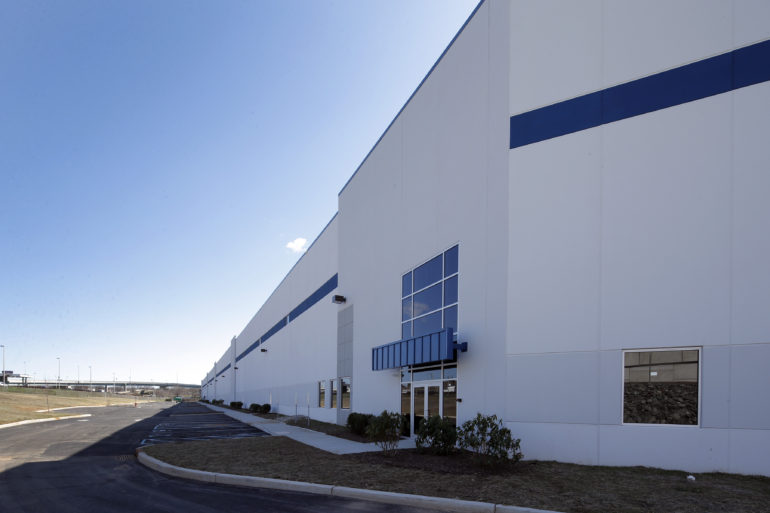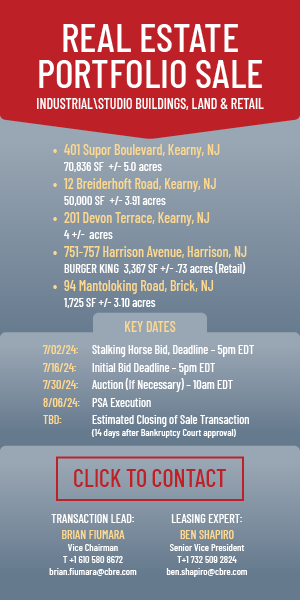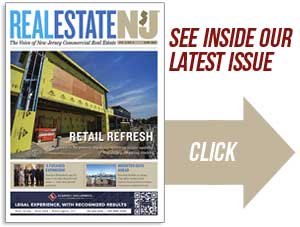750 Union Ave., a 263,415-square-foot distribution center built by Bridge Development Partners — Courtesy: Bridge Development Partners
By Joshua Burd
The state’s industrial market is firing on all cylinders, but just how long will it last?
A panel of leading owners and brokers tackled that very question last week, gauging everything from rental rates to the demand from institutional investors. And while the recent political turmoil has created some uncertainty, they said New Jersey’s location and the growth of so-called last mile distribution needs will ensure the market’s continued strength in the year ahead.

“I think hyper growth is never a good thing,” said Jeff Milanaik, a principal with Bridge Development Partners LLC. “But if we can just maintain this consistent level, I think we’ll probably be having the same conversation back here in 2018.”
Speaking at a conference hosted by the Mid Atlantic Real Estate Journal, the panel weighed the future of a sector that reached historic levels in 2016. The northern and central New Jersey industrial market saw 10.6 million square feet of net absorption last year, the highest total since 1998, according to Transwestern, while setting a record for year-over-year rent growth.
“We’ve had a very steep climb quarter after quarter as it relates to rates, and that rate of increase is naturally going to be slowing down and probably is already occurring,” said Brian Banaszynski, president of Heller Industrial Parks. He said absorption could also slow, due in part to the market’s limited supply, but that the broader outlook was still positive.
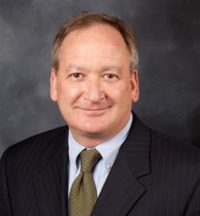
“Even with a correction, I think, given the fundamentals that we’re fortunate to have … we’re still going to be in a very favorable place relative to long-term rates,” said Banaszynski, whose firm is based in Edison.
Stan Danzig, a veteran broker who moderated the panel, pointed to the rise of e-commerce as a driver of the recent rent growth. He said it appears that “speed to market and urgency of getting their product is almost more important than pricing,” allowing owners to achieve higher rates and take greater risks to find well-located development sites.
He asked the panel to weigh in on the future of e-commerce as a continued force in the market.
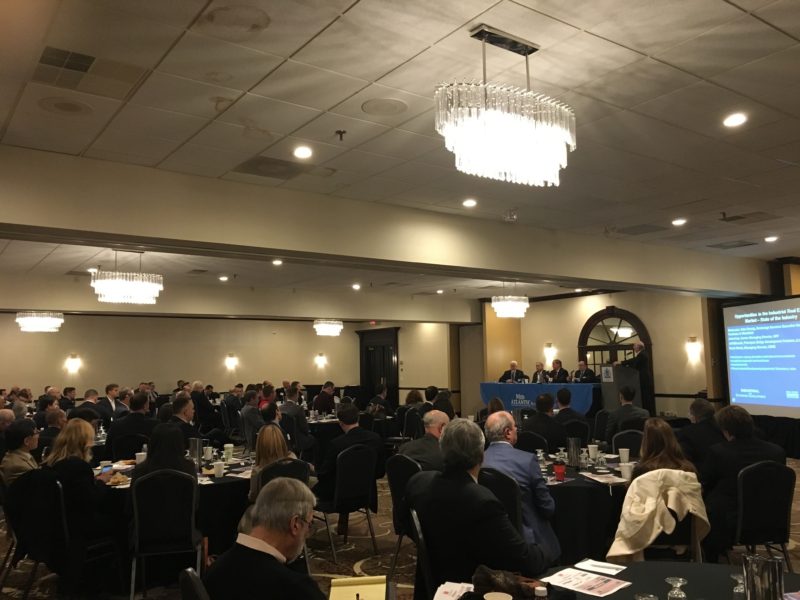
“How long does this continue? How much growth do we have left in it?” asked Danzig, an executive vice president with Cushman & Wakefield in East Rutherford. “And how much are we developing for the e-commerce market versus the traditional box user?”
Kevin Welsh, a senior vice president with CBRE, noted that e-commerce deals now account for more than half of the leasing volume in properties of 500,000 square feet or greater.
“E-commerce has been a game-changer in the industrial space. This has had a structural impact on demand,” said Welsh, a capital markets broker based in Saddle Brook, later adding. “People are looking at e-commerce, from the demand standpoint, as we’re scratching the surface.”
And while the panelists acknowledged that some e-commerce users may come without a proven track record, they said investors are bullish on such tenants in their pursuit of industrial assets.

“As long as the credit stays strong and outlook is favorable for the company, you want as many as you can get,” said Jose Cruz, a senior managing director with HFF. “A lot of these institutional groups are underweighted on industrial, so anything that comes up, they’re going to look at — and by anything, I mean ’60s, ’70s product to today.
“Whether they bid and close is another story, but in terms of that demand for that type of product … they will look at it,” Cruz added: “For a lot of them, it comes down to credit, lease exposure, but if all that falls in line for those e-commerce firms right now, I think they’re going to continue to buy them.”
The panel, one of three at the Feb. 3 conference, pointed to the spike in institutional investors that are “chasing” warehouse and distribution space, creating what has become a favorable environment for developers who are willing to sell. For instance, Bridge Development recently announced the sale of its first New Jersey project, a 263,415-square-foot building at 750 Union Ave., to a fund managed by J.P. Morgan for $46.5 million.
“Institutional investors are increasing industrial allocations, but there’s very few deals,” Welsh said. “So obviously when you have that level of demand, you get cap rate compression.”

That raises the prospect of investors looking toward secondary markets such as the Interstate 80 corridor, Welsh said, noting that locales such as Fairfield, Totowa and Clifton “have tremendous connectivity to the city.” While the New Jersey Turnpike gets the most attention, he said “you’ll see more and more opportunities and more and more liquidity outside the Turnpike.”
With all of the positive news in the industrial sector, Cruz questioned whether the market could be due for “a little bit of a breather.” That may be true when it comes to capital markets, he said, as investors grow cautious about not wanting to buy at the peak of the market.
The panel also addressed concerns about protectionism that have grown since the beginning of the Donald Trump presidency. Danzig said the administration’s first two weeks have raised the prospect of “abrupt change” in relations with trade partners such as China and Mexico, noting that “status quo, the way it’s been for the last seven to eight years of continued growth, is better than abrupt change.”
Milanaik agreed, saying it “is a little concerning when you get these pushbacks. I hope it settles down pretty soon from that regard.” But he dismissed the possibility of large-scale reshoring of consumer goods, adding that the state’s strong fundamentals should ensure that the market continues to be viable.
“The majority of the goods that we consume are not ever going to come back to being made in the United States,” Milanaik said, noting that manufacturing is still far too expensive here. “So we’re going to continue to have those trade partners out there. And the one thing that keeps us alive in our country here as far as the economy is we are a demanding, consuming nation.”

